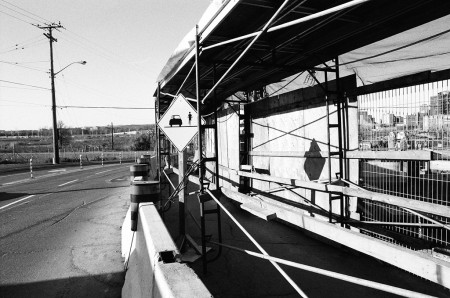
During the last few days, I have had a depressing number of people approach me quasi-triumphantly, pointing to either the CRU emails or the first winter snowfall as evidence that climate change is nothing to worry about.
Both comments are worrisome, given that we are in the midst of negotiations at Copenhagen that will play a significant role in determining whether we keep temperature rise under 2°C or not. The CRU emails already have a post of their own, but I thought I would say a couple of things about winter.
The latter argument – about the snow – is especially absurd. Climate change is about a shifting distribution of temperatures. There will always be extremes of hot and cold, it’s just that the former are becoming more frequent relative to the latter. That said, I recall reading about a study that found that most Canadians cannot explain why there are seasons at all, with a plurality offering the theory that is has to do with the distance between the Earth and the sun. Of course, our winter is summer in the southern hemisphere, which shows that this hypothesis cannot be valid. Winters are the consequence of the fact that the Earth rotates on an axis that is presently tilted 23.44° off from the direction of our orbit. That makes the length of days variable, and changes how the distribution of temperatures across the globe plays out. That level of tilt varies across geological time due to tidal forces. When the tilt is greater, the variation between the seasons is alo larger; when the tilt is lesser, the weather towards the poles remains more consistent year-round. The level of tilt has an affect on processes like glaciation.
This will continue to happen essentially forever, regardless of how much warming we experience. The distant polar regions will always experience months of darkness, and will thus always be colder than the equator during those spans. Indeed, this is a nice demonstration of what a massive amount of energy the sun adds to the Earth system. None of this disproves the fact that greenhouse gasses being added to the atmosphere warm the planetary system overall.
The two queries also highlight some potentially important psychological issues. People on both sides of the argument are sometimes overly quick to grab at any piece of evidence that seems to support what they already believe. In his book, Greg Craven goes on at some length about the importance of this ‘confirmation bias.’ Such sloppy reasoning is one reason why the climate change debate is so flawed. Hard as it can be to do so, we need to question data and sources of information even when they seem to confirm our existing beliefs – just as we must take into consideration sources and data that seem to contradict what we hold to be true. That doesn’t mean, however, that we should remain paralyzed forever, unable to take action due to uncertainty. We take precautionary action on the basis of uncertain threats all the time. A risk management approach to climate change is one where the preponderance of evidence is sufficient to drive preventative action.
Above and beyond that, I think the fact that people cheerily point to a snowfall to argue that the planet isn’t in danger shows that they don’t yet seriously appreciate how dangerous climate change could be. The fact that it is still often treated as a half-joking matter bodes ill for our ability to put our society on a course where the largest risks of catastrophic or runaway climate change can be avoided.



